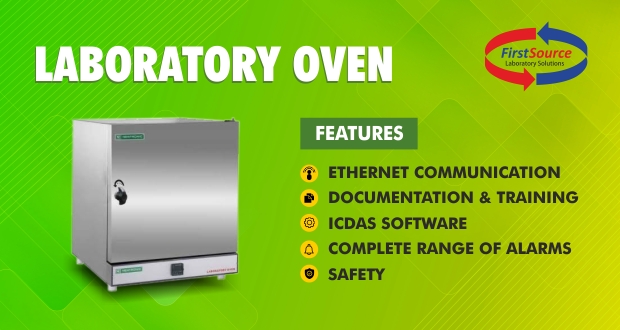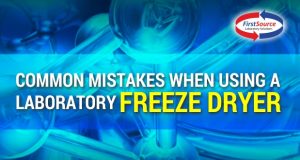For operating your oven at the pinnacle execution, consider these support tips. Regardless of whether, oven is utilized in a strengthening application or in a strain test. Each proprietor of oven ought to perform routine upkeep validation to keep the oven at pinnacle condition. Maintenance is essential for the life span of an item and its execution. Everybody realizes that upkeep is essential for item life span and execution. The testing of the ovens, research facility and process applications are no special case. Each oven owner needs an agenda for keeping it at a peak performance, whether it is used in a pressure test or a tempering application. Also, the ovens that have mounting congregations or extraordinary cooling have much more upkeep issues.

Tip 1: Maintaining the blower:
The blower engine is a standout amongst the most vital highlights of oven. If it’s a sleeve bearing engine then proper lubrication is an unquestionable requirement. If the blower engine is outfitted with oil containers, grease up with five drops of SAE 20 non-cleanser oil at half year interims. The engines pre-lubricated or metal ball engines at the production don’t require grease. Make sure to apply the oil at the front and back of the engine where there are oil ports in the lodging. Make sure to consider the producer’s directions while oiling your motor of oven. If the blower motor is kept free from debris and dirt then the danger of untimely stove stoppage is diminished. Insulation of loose blanket from oven and other outside materials may get captured in blower all together and this makes an uneven state in the engine. Using an air jet and vacuuming can keep vent openings clean.
Additionally, check the blower haggle shaft set screws intermittently, if it is a nonstop obligation unit. Make sure to fix the screws as required. And confirm that the general blower engine mounting is secure. Ensure that the mounting screws are comfortable, yet don’t overtighten if this may smash the detachment or versatile washers. The separation washers are situated behind the mounting plate and mounting screws between the plate and broiler. Continuously supplant the washers when harmed.
Tip 2: Consider oven location and avoid restricted airflow:
The oven physical location is another critical thought. Don’t put the oven where wind stream around the blower engine is blocked. Be cautious where the item is set inside the stove. Limiting the air bays and outlets lessens wind current through the whole stove, leading to failure in premature element and poor execution.
Tip 3: Using correct power:
Working on decreased power can result in poor execution. An exemplary case of this issue is functioning of a 240 VAC broiler on 208 VAC. This results in twenty percent of control decrease. If you encounter unacceptable working conditions on account of decreased power, right with a buck-help transformer.
Tip 4: Check your heating elements:
Worn out warming components result in decreased power and loss of execution. If the execution of oven drops off or it takes longer than ordinary to warm up, at that point check the components. One path is to check individual components obstruction with a computerized multi meter. For wellbeing reasons, turn off the power to control framework. When power is off, detach every component from the circuit in a systematic way. in every case first kill capacity to the control framework. Interface the voltmeter over leads and set the meter to ohms. A high vastness would show a worn-out component, a low perusing would demonstrate a great or typical component.
Second technique is an amperage verification of components. This includes a clasp on ammeter to check present draw. To start, cut the meter around one of the leads heading off to bank of components. If the two leads are connected in the meantime, everyone will counteract the other. Turn framework control on and set the temperature controller for yield of 100 percent. If present draw is bringing down by in 10 percent excess of information name rating, you should check every component autonomously and deliberately.
Set the controller to 100 percent physically, while checking singular components. Make sure just a single lead at any given moment is appended to an ammeter. No present perusing shows a conceivable terrible component. After each perusing, return controller yield to 0 percent to abstain from overheating broiler. At last, play out an obstruction beware of the component to confirm a fizzled component. Contingent upon the sort of components utilized in the stove, distinctive substitution directions apply. One thing to recall is that control must be separated from oven before supplanting the warming components. Inability to do this straightforward strategy may result to death or personal damage.
Tip 5: Check your thermocouples:
If the oven stops because of a sensor break, the stove temperature sensor or its wiring might be the reason. 0There could be two issues that require redressing, first is to open or broken thermocouple or a broken expansion lead. The second is a shorted lead outside of the stove. Primary breakdown happens on dab where two thermocouple wires meet at the detecting unit inside the stove. Expel thermocouple from oven and examine it outwards for any splits or breaks on thermocouple wires. Utilize an ohm meter associated over thermocouple which prompts check for progression on the thermocouple. Prior to utilizing the meter, detach the thermocouple from the control framework. A broken expansion lead might be as evident as a break at the connector outside the stove or covered up amidst the lead. To fix a break at the connector, strip back and associate toward the finish of the lead. An ohm meter is expected in discovering a break in the center of the lead. Utilize the ohm to validate the check for coherence through the leads. If that intermittence is noted, fix by basically supplanting the augmentation lead with a similar kind of lead.
If the controller of oven encompasses, despite the fact that the oven is clearly hot. This may show a shorted thermocouple where two thermocouple wires are contacting. At the point when the exposed wires reach, this makes chilly intersection depicted, to fix, separate the leads. If you have to supplant the whole thermocouple, supplant it with same sort of thermocouple that was utilized in the broiler. When supplanting, twist the new thermocouple to coordinate the first arrangement. Watch the extremity, if the temperature perusing drops as the broiler temperature rises, thermocouple extremity is turned around. Set this extremity issue by halting the warming procedure and turning around the thermocouple. If the temperature perusing ascends as the stove temperature rises, proceed with the warming procedure.
Tip 6: Plug unnecessary heat losses:
If your broiler is furnished with a light, utilize a port module the socket of light, when not utilizing the light. Notwithstanding while working light socket inside the stove’s temperature rating. The socket of the light may have a temperature rating that is not exactly the rating of your stove, particularly a high temperature broiler. The light socket lessens misfortune of warmth and keeps socket from breaking down from the warmth, utilizing a port module. Continuously supplant the port attachment when broken or harmed.
Tip 7: Inspect door gaskets and port inserts:
Make sure to examine the oven door gaskets and other port embeds for breaks, torn gaskets, and missing areas. If you feel warm getting away from the oven then there is going to be torn baskets.
Tip 8: Check mounting and slide assemblies:
The ovens intended for testing of materials may require unique mounting. The mounting and slide congregations required to be checked all the time to guarantee that all locking gadgets work legitimately.
Tip 9: Use water-cooled accessories:
You may not get burnt, if you tap quickly on a hot iron. If you keep your hand on it for an extended time then there is sufficient time for warmth exchange and you will get scorched. This relationship is like what happens with excessively water stream rapidness in cooling extras. When utilizing water-cooled embellishments, keep away from intemperate water stream rates. Too much high of a stream rate does not enable time for warmth to be expelled from the heap train. Inability to expel enough warmth from the heap train or counter could harm seals that are retorted, extras or a transducer, if any of it is present.
Tip 10: Cool in a correct way:
Cryogenic cooling is the favoured strategy for conveying a stove to a low temperature. It is compelling, if you pursue a couple of tips. When introducing and utilizing carbon dioxide and LN2 with solenoid valves:
- Try not to utilize controllers between the siphon tank of carbon dioxide or LN2 tank and stove.
- Abstain from utilizing manifolds. Modification in the cross segment of the fluid, can lead in hardening the fluid.
- Ensure to not try in surpassing the pressure solenoid valves rating.
- Utilize correct ventilation when you cool. The life of the operator you could be able to save might be your personal life.
Selecting the oven and also its parts is a bit difficult procedure. Maintenance of oven is important for its longevity and operation safety, from the blower engines and substances for port plugs. Other than this, no option ensures the longevity of an item. However, if you consider these ten tips then you will be able to understand few things, when you plan to purchase other oven.
Related Articles:
 FirstSource Laboratory Solutions Official Blog First Indian Scientific Online Shop
FirstSource Laboratory Solutions Official Blog First Indian Scientific Online Shop



